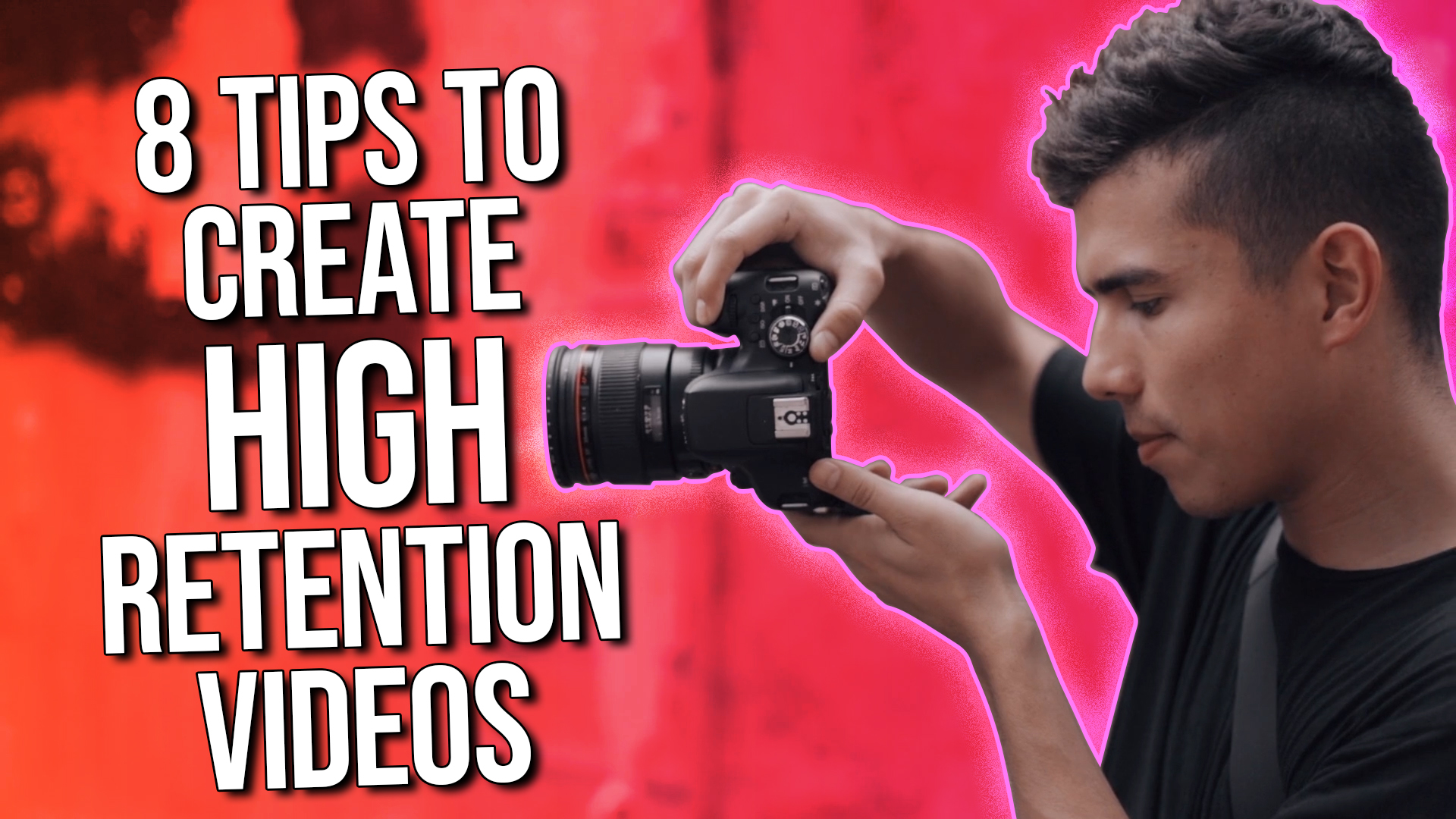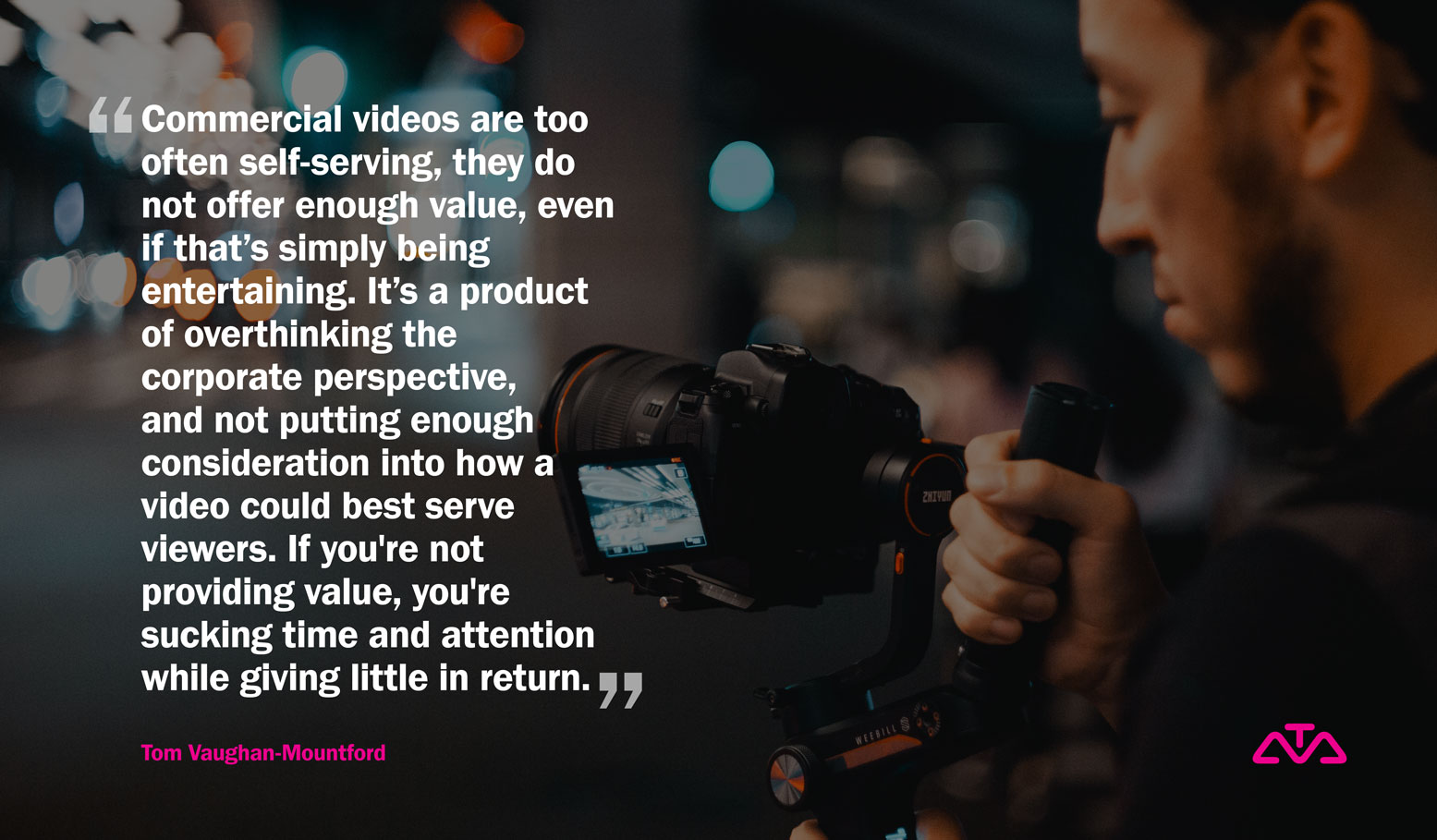8 Production Tips to Help You Create High Retention Videos for YouTube
The internet has a gazillion and one videos, and – honestly – no one cares about 99.9% of them. If your video isn’t interesting in the first few seconds (the ‘official’ statistic ranges everywhere from 3 to ten seconds depending on which blogs you read from the millions that mention it) the viewer is gonna be tapping the ‘back’ button faster than you can yell “Please don’t go, it gets better in a minute, honest!”
Can’t be bothered to read? View all the tips for creating high retention videos in THIS video!
Somehow your video climbed from the swamp of invisibility to being visible-enough to get some clicks – check out my other article, 8 Rules to Get the Ultimate SEO Benefits of Video Marketing – but your viewers just aren’t sticking with it. You’ve got low audience retention! So, here are eight solid-gold production tips for creating high retention videos for YouTube:
#1 State the agenda and the benefits from the jump
Don’t bother with corporate logos. Don’t waste time with title sequences. No one cares about lengthy personal bios. Right at the top of the video use the first two or three sentences to make clear exactly what the viewer will take away from watching. Use those first few seconds to make a great first impression and lay out the reasons to stick around. Make it 100% clear from get-go what the viewer will learn, and the benefits they’re going to have gained, by the time they have reached the end of the video. Hook them with the first few words!
#2 Work from a script
Some people put a microphone in front of themselves and deliver the exact message they want to convey – totally freestyle, in a single take! Isn’t it sickening? How on earth do they manage to do that? Most of us aren’t so lucky as to be either naturally energetic presenters or filmmakers. This makes advance planning and scripting all the more essential.
Drafting what you want to say in your video in advance, and reading it aloud several times before recording it, removes the temptation to go off at a tangent. Writing a script also allows you to check that the video will make sense, and deliver its objectives, before you bother investing the time in producing anything.
Photo by Joseph Redfield from Pexels
#3 Get your audio up to scratch. Viewers hate rubbish audio!
Sure, on YouTube anything goes, but if your audio is crappy – making voices difficult to understand – viewers will look at the remaining duration and make a quick assessment as to whether they can sustain the patience to keep watching. Most of the time, they’ll give up.
A decent professional audio setup is not that expensive at all. You only need to buy a professional condenser microphone and an audio interface to 10x the ‘watchability’ and professionalism of your videos. Yes, video quality is also of great importance, but I’d wager that most people are forgiving of slightly sub-standard video if the audio quality and the value of the content itself more than make up for it. But, if I’m going to struggle to hear the information I came for, I’m leaving!
#4 Manually add subtitles
Sure, YouTube uses AI to automatically generate subtitles that can be toggled on and off, and they’re pretty good (assuming you’ve recorded a clean soundtrack, see previous rule!) But many people will view your videos, or teasers for them, via other social platforms (such as Instagram) which are sound-off by default. More than 80% of people browse their feeds with the audio muted. To grab, and maintain, the attention of these viewers you should add burned-in (or ’embedded’) subtitles that are added as graphics during the post-production stage.
I prefer videos with subtitles created in this way, often I will view the first few seconds of a video on mute, and if the transcript of the dialogue catches my attention, I’ll un-mute it. Professionally designed and embedded subs also scream that additional effort has gone into making the video worthy of a potential viewer’s attention. If you are unfamiliar with Gary Vee, look the guy up – I can positively guarantee you that the very first video returned by the search will have highly compelling embedded subtitles appear within the first few seconds.
Photo by Luis Quintero from Pexels
#5 DON’T get hung up on duration but DO keep up the pace!
You thought I was going to say, ‘Make no video longer than two minutes!’ didn’t you?
Two minutes is an arbitrary duration that gets copied and pasted across blogs all the darn time. It’s fundamentally flawed guidance. Video content should serve the needs of its audience; and your audience might be looking for fuller – more in-depth – content, so maybe a longer duration really is appropriate.
Yes, shorter videos are statistically more popular – but that DOES NOT mean that ALL videos need to be short. There’s an old filmmaking maxim, ‘Never let anything run a second longer than it’s good to watch’. Keep up the pace, always be looking for surplus elements to cut. If your video is marketing a new product, you’ll want to throw any dead-weight overboard and keep your edit as concise as possible. Think about TV ads and movie teasers – 30, 40, 60, 120 seconds – they just show the most compelling bullet-point features and benefits that will attract someone to find out more.
That said, if you’re making an in-depth ‘ultimate’ tutorial you can run as long as it continues to provide information the viewer will find valuable. Don’t believe me? Check out Taran Van Hemert’s World’s Most Advanced Video Editing Tutorial and you’ll see overwhelmingly POSITIVE vibes in the comments about the incredible 4 HOUR duration:
‘4 hours, No ads, Fully captioned. My gosh, well done!’, ‘4 hours. No ads. Give this man a round of applause!’, ‘Thank you so freaking much for this! Just awesome! Learnt a ton of everything! WOW!’, ‘I genuinely watched the entire thing and it’s been the proudest moment of my life’.
So, make your video the RIGHT duration for needs of your audience, but never let anything run a second longer than it needs to!
#6 Watch a LOT of videos on YouTube
Can you imagine a feature film director who isn’t also a movie-nerd? Or, a novelist who doesn’t much care for reading fiction? No way! Folks who are truly intent at getting good take the time to study the principles and methods of people already successful at their craft. Create a playlist on YouTube, and add to it all the videos on your topic that really stood out from the rest. What do you like about them? What made them better than the videos you ditched after a just a few seconds? How could you emulate their success while putting your own expertise and enthusiasm into the mix?
#7 Be prolific. Make LOADS of videos!
Countless marketing ‘gurus’ promise that their list of tips and tricks add up to a failsafe formula for high-engagement videos that will ‘go viral’ and deliver huge returns for their creators. That’s not how the universe, or the internet, works. Fact is, you can make absolutely no mistakes in your execution yet still not achieve your objective. Video content creation is as much an art as it is a science. You can objectively get everything right, yet – for reasons you’ll likely never discover – some people just won’t like what you’ve made and will click away.
The world’s most famous artists – in any medium – get known for their breakthrough ‘hits’, yet almost all of them sit on a back-catalogue of obscure and under-appreciated work; oftentimes HUNDREDS – even THOUSANDS – of creations that failed to take off. So, if you do everything ‘right’ and your video doesn’t perform, just make another, and another, and then another! The great news is, most people don’t bother striving to become prolific – so when their first few attempts are non-starters, they quit. Keep on going!
#8 Don’t be a copycat
The problem with following random lists of advice (yeah, I’m aware of the irony) is the risk of creating cookie-cutter videos that look like they followed the same recipe as everyone else! Following generic recommendations that have been bouncing around online for years is why so many vloggers end their videos with, “Don’t forget to like, share, and subscribe!” The stakes are low, you can afford to experiment with your style. If a video premieres to crickets and tumbleweed, and fails to gain traction, just adjust your strategy and make another.
Tom Vaughan-Mountford is an expert in TV advertising and the production of high retention videos for SME marketing. He has more than twenty years’ experience in production and post-production for broadcasters, major advertising agencies, and name-brands. He is a regular writer on the media industry, an author, and a columnist for Brand Chief Magazine. Tom is a senior creative at JMS Group, a Norwich video production company.
You can follow Tom on Twitter @tomontv and Instagram @tomvaughanmountford




